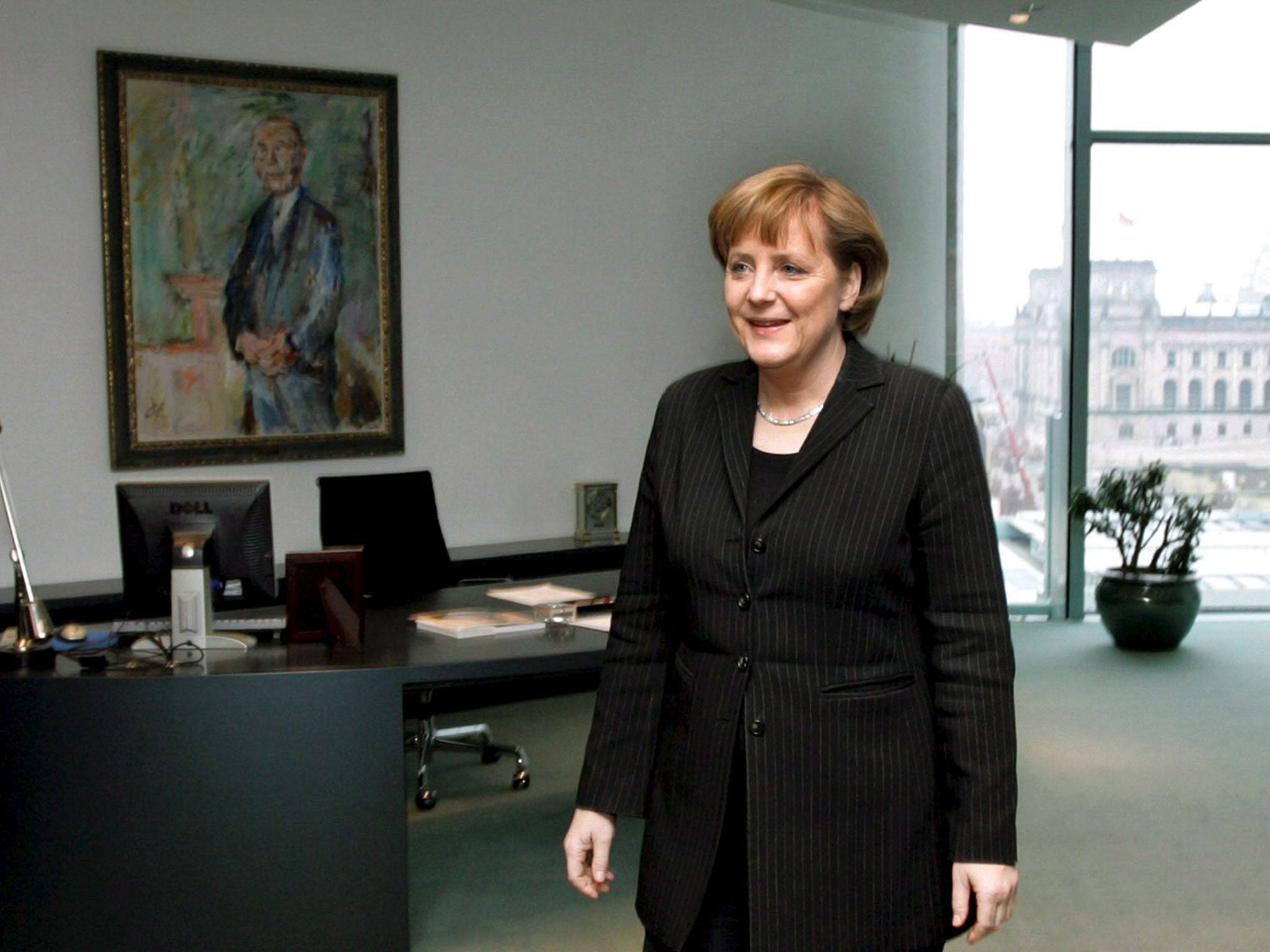Angela Merkel dislikes Gerhard Schröder's big black desk - so what does their choice of workspace says about other leaders?
Merkel revealed she doesn't like the four-metre black desk she inherited from her predecessor, preferring to work at the small writing-table in front of it

Tony Blair's desk at 10 Downing Street had a computer on it that was black, minimalist, and patently rarely used. I asked him about it and he said that it was useful for reading telegrams. Not as daft as it seems, because that was how the Foreign Office still referred to its encrypted emails, but he wasn't a technological prime minister.
Which was unexpected in someone so versed in the iconography of power. You might have thought he would want to be portrayed as modern, connected and digital. He was, after all, the first prime minister of the internet age.
He was in office when the mobile phone went from elite accessory to universal person-extension and yet he didn't use one. If he was photographed at his desk, he was writing with a fountain pen like a reassuring doctor.
Not that he used the desk much. Most world leaders don't. Angela Merkel revealed yesterday that she doesn't like the four-metre black desk she inherited from Gerhard Schröder, preferring to work at the small writing-table in front of it.
She has also replaced a postmodern painting of a falling eagle with a portrait of Konrad Adenauer, the first chancellor of postwar West Germany, which confirms that she too understands symbolism. In her vast office in the vast Berlin chancellery – with more staff than the White House, let alone the tiny Downing Street operation – she works at a modest writing-table while one of the giants of democratic German history looks down on her.
The desk, the stuff on the desk, the phones, the pictures, the office itself and its size: the visual cues of leadership.
The desk of the President of the United States, a rather ugly block of oak carved from the timbers of HMS Resolute and donated by Queen Victoria in 1880, is probably the best-known piece of furniture in the world apart from Tracey Emin's unmade bed. The very shape of Barack Obama's workspace is used as a shorthand for the authority of the world's only superpower. Curiously, neither the US nor the Russian president (who also has a "heavy wooden desk" according to a recent feature in this newspaper) has a computer in his office.
Obama has what appears to be a kind of telephone switchboard on his desk. Vladimir Putin, we are told, favours "fixed-line Cold War era telephones". Sadly, though, the photos I've seen show what look like Eighties push-button phones rather than rotary dials.
When Google Street View revealed the inside of the office of Stephen Harper, the Canadian prime minister, last year, his desk seemed suspiciously tidy. It too was computerless, and had only three things on it: a Beatles mug, a photo of Laureen, his wife, and a lamp. When Narendra Modi took office in India in June, his desk just had a pen-holder, a tub of more pens and a neat array of newspapers.
The pictures on leaders' walls carry a rather more obvious symbolism. Cameron was recently attacked colourfully by Dominic Cummings, Michael Gove's former adviser, for having had, as leader of the opposition, a "picture of Macmillan on the wall... that's all you need to know". Meaning, presumably, that Macmillan was a patrician Tory who despised Thatcher as a radical reactionary.
The Prime Minister takes no such risks in his Downing Street office, on the walls of which hang two huge landscape photographs from the Government Art Collection of somewhere in south-west England, one with the tide in, one with the tide out. Perhaps it is a Canute reference meaning that Cameron knows the limits of his power? See what I mean about the symbolism? Once you start you cannot stop.
World leaders don't spend much time at their desks, but they still use them, just as you or I would if we had visitors – and they have visitors, with cameras, every day – to say what we want to say about ourselves. And what they say is: "I'm modest, hyper-efficient and communicate with people by old, trusted technology: face-to-face, pen and paper and landline."
Subscribe to Independent Premium to bookmark this article
Want to bookmark your favourite articles and stories to read or reference later? Start your Independent Premium subscription today.

Join our commenting forum
Join thought-provoking conversations, follow other Independent readers and see their replies